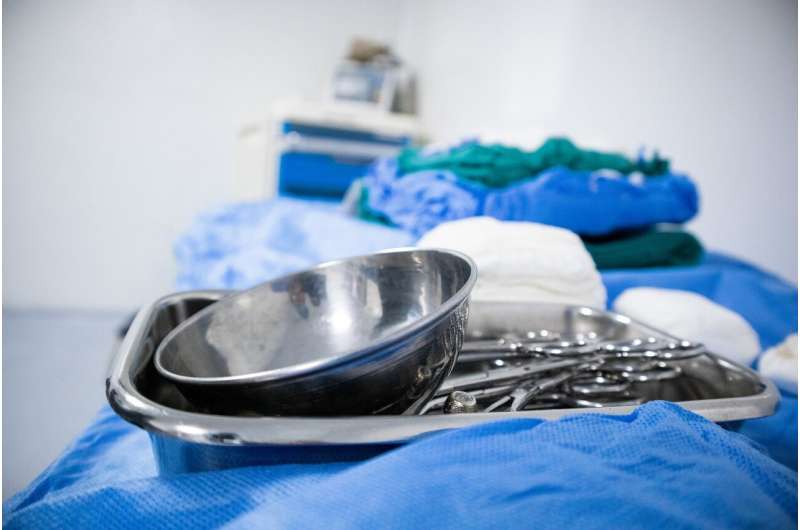This article has been reviewed according to Science X's editorial process and policies. Editors have highlighted the following attributes while ensuring the content's credibility:
fact-checked
trusted source
proofread
A device developed by researchers can improve cancer surgery—clinical trials initiated

First-in-human clinical trials have been initiated at Kuopio University Hospital with a device that assists in the identification of cancerous tissue during surgery. The tissue monitoring technique developed by startup company Marginum is based on the interdisciplinary research of the University of Eastern Finland, Kuopio University Hospital Neurosurgery and the Eastern Finland Microsurgery Center.
It is the first time such a tissue recognition technology is brought into the operating theater. "Our goal is to refine the technique into a golden standard for fluorescence-guided surgery," says Adjunct Professor of Experimental Neurosurgery and Marginum's Chairman of the Board Antti-Pekka Elomaa.
The aspirate tissue monitor is attached to a surgical suction tube routinely used in the operation, through which the tissue is removed. With the tissue monitor, the surgeon receives near real-time information about the actual content of the removed tissue. The device identifies tumor tissue based on fluorescence.
A fluorescent drug is given to the patient, which leads to the tumor standing out from other tissues by glowing. The fluorescence or glow of the tissue has conventionally been identified visually with the surgical microscope. With this method, however, it has been established that the fluorescent tumor often remains undetected, due to visual obstacles such as debris and the weakness of the glow.
Tissue monitoring of cell waste provides the surgeon with an objective and more accurate tool for fluorescence detection and decision-making during the operation. The use of the device is expected to improve tumor removal rates and reduce the need for local reoperations. This would result in healthcare savings and better outcomes for patients.
The first investigated applications for the method are high grade gliomas, which are the most common types of primary malign brain tumors.
"We managed to verify the proof-of-concept, collect valuable clinical data and test the performance of a prototype with promising results. The device will still be further developed in terms of targeted performance requirements," says Marginum CEO Samu Lehtonen who is studying medicine at the University of Eastern Finland.



















